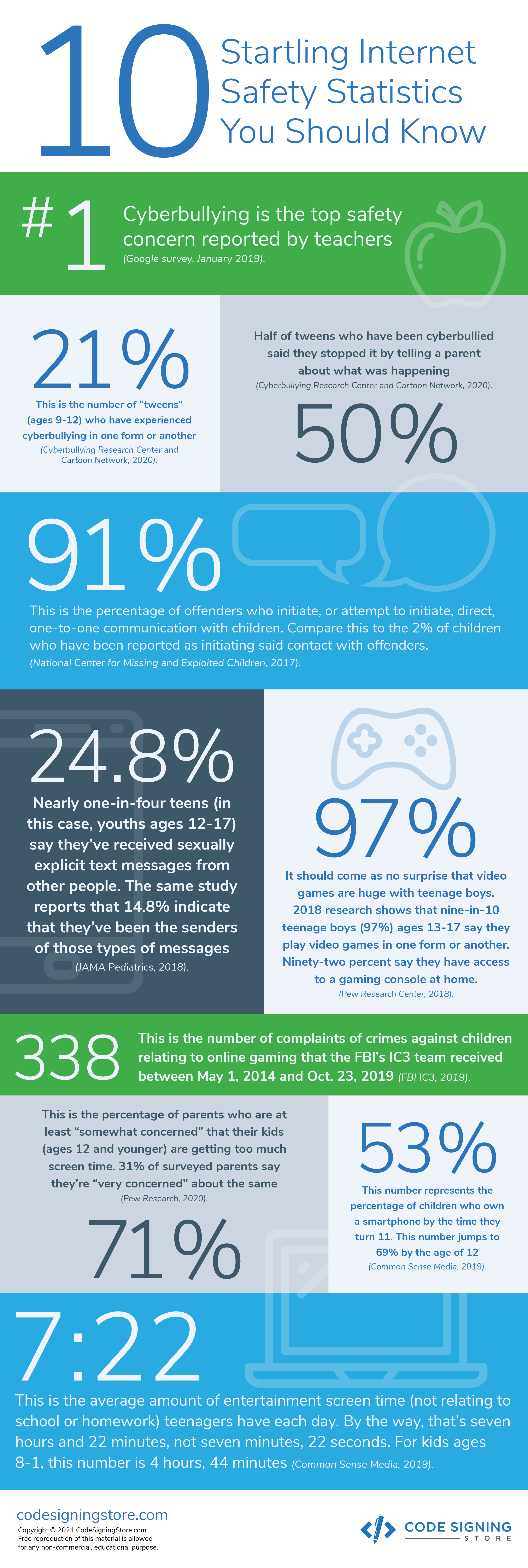Chapter 9: Internet Safety Statistics
For an eye-opening look at internet safety concerns for kids and teens, we’ve put together a list of current statistics for teachers, parents, and journalists to use. Of course, we’ve linked to the original data resources where you can find additional information about each internet safety stat.
#1
Cyberbullying is the top safety concern reported by teachers (Google survey, January 2019).
21%
This is the number of “tweens” (ages 9-12) who have experienced cyberbullying in one form or another (Cyberbullying Research Center and Cartoon Network, 2020).
50%
Half of tweens who have been cyberbullied said they stopped it by telling a parent about what was happening (Cyberbullying Research Center and Cartoon Network, 2020).
91%
This is the percentage of offenders who initiate, or attempt to initiate, direct, one-to-one communication with children. Compare this to the 2% of children who have been reported as initiating said contact with offenders. (National Center for Missing and Exploited Children, 2017).
24.8%
Nearly one-in-four teens (in this case, youths ages 12-17) say they’ve received sexually explicit text messages from other people. The same study reports that 14.8% indicate that they’ve been the senders of those types of messages (JAMA Pediatrics, 2018).
97%
It should come as no surprise that video games are huge with teenage boys. 2018 research shows that nine-in-10 teenage boys (97%) ages 13-17 say they play video games in one form or another. Ninety-two percent say they have access to a gaming console at home. (Pew Research Center, 2018).
338
This is the number of complaints of crimes against children relating to online gaming that the FBI’s IC3 team received between May 1, 2014 and Oct. 23, 2019 (FBI IC3, 2019).
71%
This is the percentage of parents who are at least “somewhat concerned” that their kids (ages 12 and younger) are getting too much screen time. 31% of surveyed parents say they’re “very concerned” about the same (Pew Research, 2020).
53%
This number represents the percentage of children who own a smartphone by the time they turn 11. This number jumps to 69% by the age of 12 (Common Sense Media, 2019).
7:22
This is the average amount of entertainment screen time (not relating to school or homework) teenagers have each day. By the way, that’s seven hours and 22 minutes, not seven minutes, 22 seconds. For kids ages 8-1, this number is 4 hours, 44 minutes (Common Sense Media, 2019).


